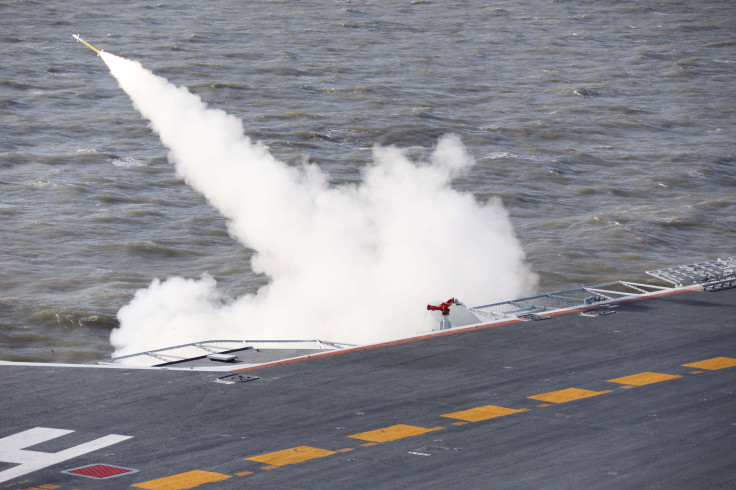'World-Class': China Claims Its New Portable Missile Can Distinguish Targets From Decoys
KEY POINTS
- The QW-12 missile accurately hit a target drone among eight decoy flares
- The missile successfully took on both a slow helicopter and a faster rocket
- A report rejected the claim, saying the U.S. had "seeker" technology for years
China has reportedly unveiled a new portable air defense missile that it claims can distinguish targets from decoys and hit them with precision.
According to the People's Liberation Army, no foreign counterpart has yet publicly demonstrated such capability, said South China Morning Post, quoting local media reports.
A video released by the state showed the QW-12 missile accurately hitting a target drone among eight decoy flares. "As the QW-12 missile was approaching, the aircraft released eight decoy flares that resemble the infrared signal of the target aircraft in an attempt to disorient the missile. However, the missile ignored the flares and hit the aircraft," said a report by state-backed Global Times.
Apart from a slower target of a helicopter, the missile was also aimed at a faster-moving 122mm-caliber rocket. Like the first test, the QW-12 successfully intercepted the rocket too. However, as a direct impact was impossible due to the rocket's speed, the missile used its laser proximity detonator to detonate itself near the target, bringing the rocket down.
"The test showed the QW-12's abilities under a complex battlefield environment, as the missile is world-class," the Global Times report quoted Shi Hong, executive chief editor of the Chinese magazine Shipborne Weapons.
However, the claims are unverified. According to National Interest, very little information is available about the "anti-decoy" technology as claimed by the Chinese. The report termed the PLA's claim that it had no equivalent as "ambitious," saying that the U.S. had been developing "seeker" technology for years.
The National Interest added that the Seeker technology enabled the missile to "track and discern between several moving targets at one time." The U.S. has also made further advancements in the technology that allows it to make "key distinctions in flight and adjust accordingly."
The claim that the missile used the unique "laser proximity detonator to detonate itself near the target" was also rejected by the report which said the U.S. had been making advancements in the "proximity fusing technology."
That said, China is one of the few countries to have developed portable air defense missiles, the others being the U.S., Russia and the British forces.
However, the most popular one is the U.S. "FIM-92 Stinger," which is currently in service with more than 18 countries and the four U.S. armed forces. It employs the latest Stinger-RMP missile equipped with a passive infrared seeker. It entered service during the 1980s.

© Copyright IBTimes 2024. All rights reserved.





















